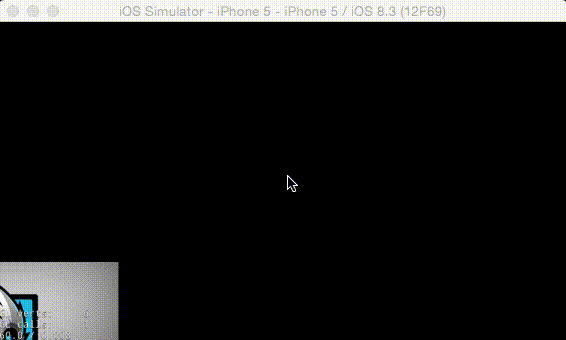Unityユーザーならコンポーネントはよく知ってると思います。Unityはコンポーネントパタンをうまく利用して非常に拡張しやすいゲームエンジンを作りました。
コンポーネントの良さは同じコードをいろんなプロジェクトに使えるというところです。
cocos2d-xのComponent
実はcocos2d-xにcocos2d::Componentというクラスが存在しています。このクラスを継承することで、Unityみたいに各機能をコンポーネント化できます。PlayerInputComponentをサンプルとして作りながら説明しよう。
サンプル:PlayerInputComponent
PlayerInputComponentはタップする先に移動させるコンポーネントです。
PlayerInputComponent.h
#include "cocos2d.h"
// cocos2d::Componentを継承する
class PlayerInputComponent : public cocos2d::Component
{
public:
PlayerInputComponent();
virtual ~PlayerInputComponent();
virtual bool init();
virtual void onEnter();
virtual void update(float delta);
// touch events
bool onTouchBegan(cocos2d::Touch* touch, cocos2d::Event* event);
void onTouchMoved(cocos2d::Touch* touch, cocos2d::Event* event);
void onTouchEnded(cocos2d::Touch* touch, cocos2d::Event* event);
void onTouchCanceled(cocos2d::Touch* touch, cocos2d::Event* event);
// PlayerInputComponent::create()メソードを作成してくれるマクロ
CREATE_FUNC(PlayerInputComponent);
protected:
// listener
cocos2d::EventListenerTouchOneByOne *touch_listener_;
// 移動先
cocos2d::Vec2 move_to_;
// 今の場所
cocos2d::Vec2 cur_pos_;
// スピード
float speed_;
};
PlayerInputComponent.cpp
#include "PlayerInputComponent.h"
USING_NS_CC;
PlayerInputComponent::PlayerInputComponent():
touch_listener_(nullptr),
move_to_(Vec2::ZERO),
cur_pos_(Vec2::ZERO),
speed_(0)
{
}
PlayerInputComponent::~PlayerInputComponent()
{
touch_listener_->release();
}
bool PlayerInputComponent::init()
{
if (! Component::init()) return false;
// コンポーネントの名前をセット
// Owner->getComponent(<コンポーネント名>)でinstanceを取得できます
this->setName("PlayerInput");
// Listenerを作成
touch_listener_ = EventListenerTouchOneByOne::create();
touch_listener_->setSwallowTouches(true);
// autoreleaseされないように
touch_listener_->retain();
touch_listener_->onTouchBegan = CC_CALLBACK_2(PlayerInputComponent::onTouchBegan, this);
touch_listener_->onTouchMoved = CC_CALLBACK_2(PlayerInputComponent::onTouchMoved, this);
touch_listener_->onTouchEnded = CC_CALLBACK_2(PlayerInputComponent::onTouchEnded, this);
touch_listener_->onTouchCancelled = CC_CALLBACK_2(PlayerInputComponent::onTouchCanceled, this);
return true;
}
void PlayerInputComponent::onEnter()
{
Component::onEnter();
// スピードをセット
speed_ = 400;
Director::getInstance()->getEventDispatcher()->addEventListenerWithSceneGraphPriority(touch_listener_, this->getOwner());
// Ownerのupdateを走らせる
this->getOwner()->scheduleUpdate();
}
void PlayerInputComponent::update(float delta)
{
// 今の位置と目的地座標が違うであれば:
if (! this->getOwner()->getPosition().equals(move_to_))
{
// 移動距離のx, y座標
Vec2 v = move_to_ - cur_pos_;
// 移動距離
float d = move_to_.distance(cur_pos_);
// 現在の位置
Vec2 to = this->getOwner()->getPosition();
// 移動速度
Vec2 s = Vec2(v.x * speed_/d, v.y * speed_/d);
//
to += s * delta;
// 誤差を補正
if (v.x < 0) {
if (to.x < move_to_.x) to.x = move_to_.x;
} else {
if (to.x > move_to_.x) to.x = move_to_.x;
}
if (v.y < 0) {
if (to.y < move_to_.y) to.y = move_to_.y;
} else {
if (to.y > move_to_.y) to.y = move_to_.y;
}
// Ownerの位置更新
this->getOwner()->setPosition(to);
}
}
bool PlayerInputComponent::onTouchBegan(cocos2d::Touch* touch, cocos2d::Event *event)
{
CCLOG("On touch began");
return true;
}
void PlayerInputComponent::onTouchMoved(cocos2d::Touch* touch, cocos2d::Event *event)
{
CCLOG("On touch moved");
}
void PlayerInputComponent::onTouchEnded(cocos2d::Touch* touch, cocos2d::Event *event)
{
// 今の位置と目的をアサインする
cur_pos_ = this->getOwner()->getPosition();
move_to_ = touch->getLocation();
CCLOG("On touch ended");
}
void PlayerInputComponent::onTouchCanceled(cocos2d::Touch* touch, cocos2d::Event *event)
{
CCLOG("On touch canceled");
}
Componentを使う
Componentを使うのが簡単です。addComponent()にComponentのインスタンスを渡すだけです:
auto sprite = Sprite::create("HelloWorld.png");
sprite->addComponent(PlayerInputComponent::create());
this->addChild(sprite, 0);
デモ

まとめ
Componentパタンのいいところは、少しのパフォーマンスコストでDRYなコーディングができます。極端にパフォーマンスを追求するゲームじゃなければ、Componentパタンをおすすめします。